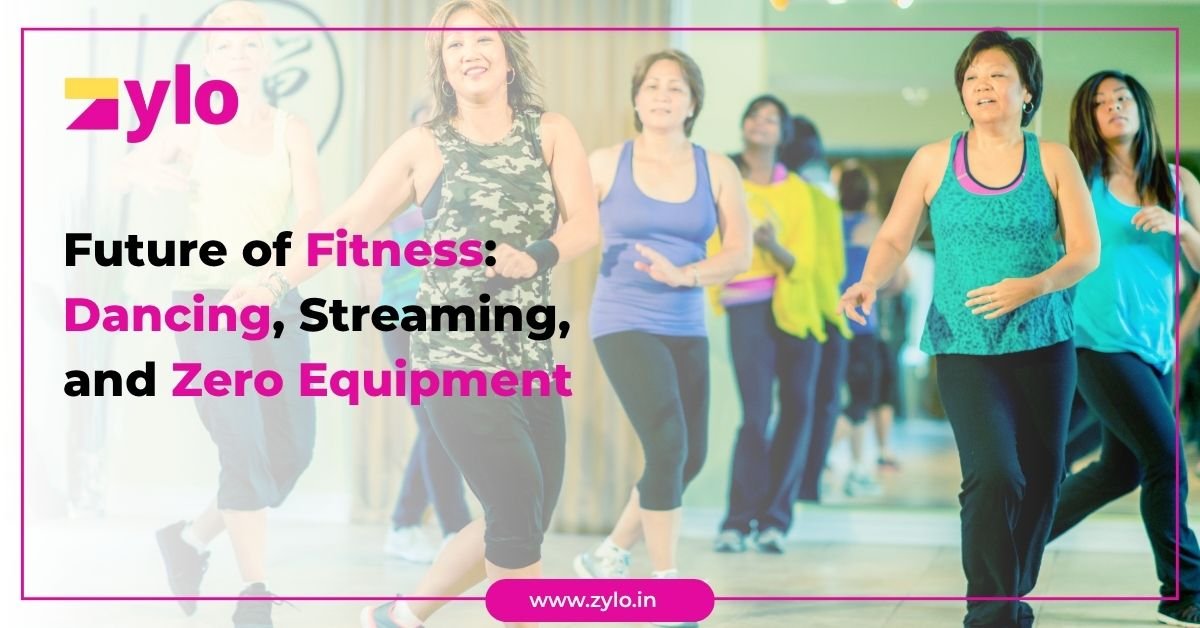In an era where technology is reshaping how we live, work, and play, fitness is no exception. The traditional gym setup—with its bulky machines, fixed schedules, and crowded spaces—is quickly being replaced by flexible, fun, and accessible alternatives. The future of fitness is being defined by dance-based workouts, streaming platforms, and equipment-free routines that anyone can do right from home. At the heart of this transformation is the rising popularity of online fitness training programs that make it easier than ever to stay fit, no matter where you are.
The Shift from Gyms to Digital Fitness
The global pandemic accelerated a shift that was already underway—people began realizing that they don’t need a gym membership or a fully equipped home gym to get fit. All they needed was a screen, a little space, and the right guidance. This digital revolution democratized access to fitness by removing geographical, financial, and time-based barriers.
Today, fitness apps and online platforms offer thousands of virtual classes in real-time or on demand. Whether it’s dance cardio, HIIT, yoga, or strength training, people are embracing the freedom to work out at their convenience.
Why Dance is Leading the Way
Among the many digital workouts available, dance-based programs are emerging as favourites. Why? Because they make fitness fun. Unlike traditional exercises that can feel repetitive or intimidating, dance workouts energize participants and tap into the joy of movement.
Zumba fitness online is a standout example. Combining Latin-inspired dance music with high-energy movements, Zumba doesn’t just burn calories—it boosts your mood, improves coordination, and helps reduce stress. This program has become synonymous with fun and effective at-home fitness, especially for people who want an enjoyable alternative to treadmill runs and weightlifting.
Zero Equipment, Maximum Convenience
One of the biggest hurdles to working out at home is the assumption that you need expensive or bulky equipment. The future of fitness proves otherwise. Most dance-based and bodyweight routines require nothing more than a yoga mat or a soft floor.
This makes online fitness training more inclusive. Whether you live in a small apartment or travel frequently, you can maintain a consistent fitness routine without lugging around dumbbells or resistance bands.
In Zumba classes, your body is the equipment. The quick footwork, arm movements, and core engagement provide a full-body workout that targets multiple muscle groups while keeping things light and fun.
Personalization Through Streaming
Another significant evolution is personalization. Online platforms are now offering workouts tailored to different fitness levels, goals, and preferences. You can choose beginner-level Zumba classes if you’re just starting or advanced routines if you’re looking for a challenge.
Streaming services also allow for real-time interaction with instructors through live chats or video calls. This means participants still benefit from professional guidance and motivation without stepping out of their homes.
Many online fitness training programs now even offer progress tracking, reminders, and nutrition coaching integrated into the same app. This holistic approach keeps users more accountable and consistent in their journey.
Mental Health Benefits
The future of fitness isn’t just about sculpted abs or toned arms—it’s about feeling better inside and out. Numerous studies show that regular physical activity improves mental health by reducing symptoms of anxiety, depression, and chronic stress.
Dance workouts go one step further by combining movement with music. The rhythm helps release endorphins, known as the “feel-good” hormones. People often finish a Zumba class smiling, not just because they worked hard but because they genuinely had fun.
When fitness feels more like a celebration than a chore, it becomes a sustainable part of life.
Accessibility for All
One of the most promising aspects of this digital fitness evolution is inclusivity. Whether you’re a stay-at-home parent, a busy professional, a student, or someone recovering from an illness, the option to work out on your schedule and in your own space is a game-changer.
Zumba fitness online is especially popular among women who may feel uncomfortable in a traditional gym setting. With no one watching and no need to “keep up” with others, people are more likely to push past their fears and enjoy the journey.
Community and Connection
Despite being virtual, these programs aren’t isolating. Many platforms offer community groups, challenges, leaderboards, and real-time shoutouts during live classes. This community engagement builds motivation and makes people feel like they are part of something bigger.
For instance, Zumba instructors often create private WhatsApp or Facebook groups for participants to share their progress, encourage each other, and stay updated about class schedules. This sense of belonging drives consistency and helps participants stick to their goals.
Affordable and Scalable
Unlike gym memberships, which can be costly and often underused, most online fitness training platforms offer flexible pricing. Some even provide free trial classes or pay-as-you-go options. Since there’s no physical space or equipment maintenance involved, providers can scale easily and keep costs low for users.
Zumba, for example, can be done live on Zoom or through pre-recorded sessions, both of which are cost-effective and accessible from anywhere in the world.
The Role of AI and Smart Devices
As we move further into the future, AI and wearable technology are enhancing how people experience virtual workouts. Smartwatches and fitness trackers can sync with online platforms to offer real-time feedback on heart rate, calories burned, and activity levels.
Some apps even use AI to analyze your form via your phone’s camera and suggest corrections, creating a near-personal-trainer experience from the comfort of your home.
The Bottom Line
The future of fitness is bright, vibrant, and tailored for modern life. With innovations, getting fit is no longer confined to a gym or a rigid routine. It’s joyful, interactive, and available to everyone—regardless of their schedule, location, or access to equipment.
Whether you’re dancing your way through a 30-minute Zumba class or joining a live-streamed workout with friends, you’re not just burning calories—you’re investing in your long-term health and happiness.
So why wait? The dance floor is now in your living room, and your trainer is just one click away.



